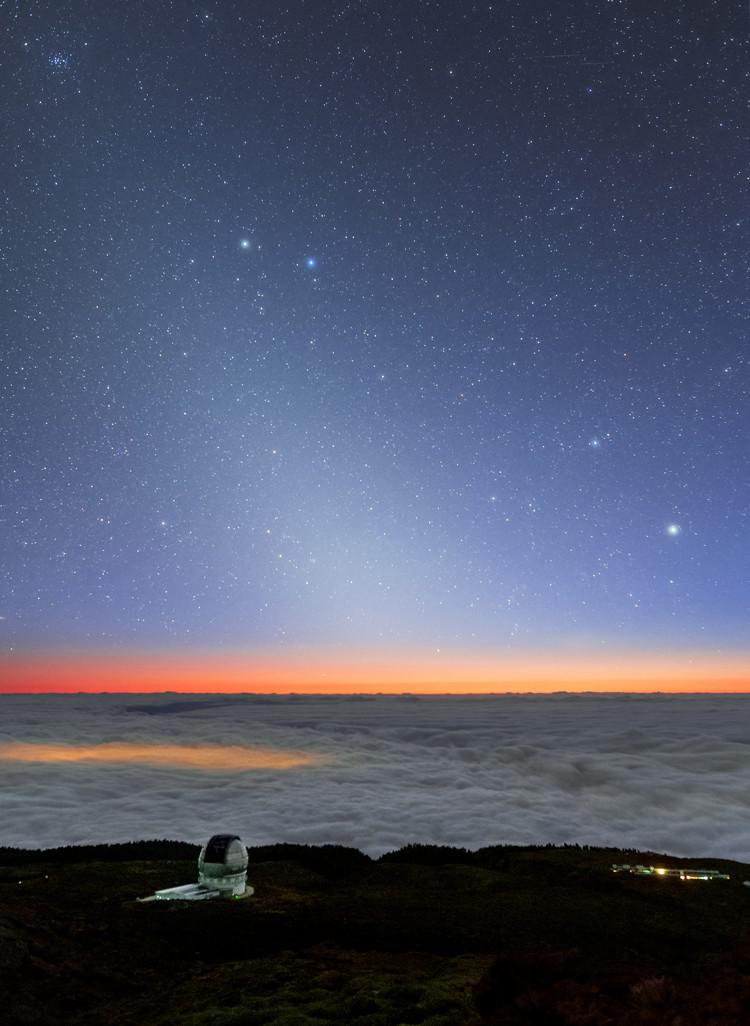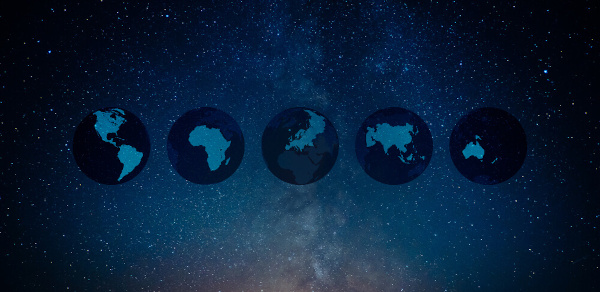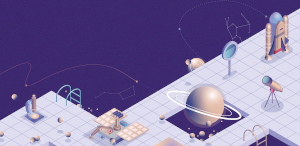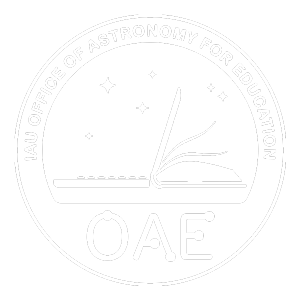This page describes an image Zodiacal Light over GTC Observatory
Image caption:
Winner in the 2022 IAU OAE Astrophotography Contest, category Still images of celestial patterns.
Taken from La Palma, Canary Islands, in May 2022, this image captures the Zodiacal light, three prominent constellations (Gemini, Cancer and Auriga), and the Beehive Cluster, which appears as a small nebulosity to the unaided eye under dark skies. The Zodiacal light is a triangular white glow stretching along the ecliptic that is visible here at the western horizon shortly after sunset.The Canary Islands were considered the westernmost land of the inhabited world by the ancient Greeks. The dim shimmer in the Zodiac might have inspired the Greek philosopher Plato to think that the Sun leaves a trace of sunny glitter in its wake, and that the current path of the Sun, the ecliptic, has not always been its path. Plato believed that the Milky Way was a former path of the Sun and that its bright clouds are sparks of the Sun’s glory left behind. Today, we know that these two phenomena in the sky have different causes; while the Zodiacal light is really caused by reflection of sunlight from very tiny dust particles in the plane of the ecliptic, the Milky Way consists of billions of stars. The Zodiacal light is a smooth cone of light from the horizon upwards, while the Milky Way crosses the whole sky and also includes dark clouds.
The Zodiac is described by Indigenous Australians as the Dreaming Road, and the Zodiacal light is a celestial rope connecting Venus to the Sun. The two bright stars in the top-left of the image are Castor (the bluish star) and Pollux (the whitish star), which are part of the constellation Gemini, the Twins. The two bright stars towards the bottom-right of the image are Menkalinan (the dimmer one) and Capella (the brighter one), which are part of the constellation Auriga, the Charioteer.
The Wergaia people of Western Victoria in Australia see Castor and Pollux as brothers who hunt the kangaroo Purra in their stories. This has coincidental similarities to the Babylonian story, where they are considered two strong gods of the Netherworld, depicted with weapons. The Greco-Roman myth of the twins describes them as two brothers who accompanied the first ocean sailor, Jason, on voyages with the The Ship, Argo. A similar myth exists in the Blackfoot traditions of the First Nations people of Canada and the USA, where they are considered the two brothers Ashes Chief and Struck-behind.
Scroll to captions in other languages
Image credit:
Amirreza Kamkar/IAU OAE
DOI: 10.5281/zenodo.7424024
Related glossary terms:
Astronomical Observatory
, Dust
, Zodiacal Light
Categories:
Naked Eye Astronomy
, Solar System
, Telescopes, Instruments and Observatories
Image license: Creative Commons Attribution 4.0 International (CC BY 4.0) Creative Commons Attribution 4.0 International (CC BY 4.0) icons
The media file captions presented on the OAE website were written, translated and reviewed by a collective effort from the OAE, the OAE Centers and Nodes, the OAE National Astronomy Education Coordinators (NAECs) and other volunteers. You can find a full list of credits for our translation project here. All media file captions are released under a Creative Commons CC BY-4.0 license and should be credited to "IAU OAE". The media files themselves may have different licenses (see above) and should be credited as listed above under "credit".
If you notice a factual error in this caption or an error in any of its translations then please get in touch.
Captions in Different Languages:
Image caption: Auszeichnung beim IAU OAE Astrofoto-Wettbewerb 2022, Kategorie Weitwinkelaufnahmen von Himmelsmustern.
Dieses Bild wurde im Mai 2022 von der Kanareninsel La Palma aus aufgenommen und zeigt das Zodiakallicht, drei prominente Sternbilder (Zwillinge, Krebs und Fuhrmann) sowie den Sternhaufen der Praesepe, der bei dunklem Himmel mit bloßem Auge als kleiner Nebelfleck erscheint. Das Zodiakallicht ist ein dreieckiges weißes Leuchten, das sich entlang der Ekliptik erstreckt und hier am westlichen Horizont kurz nach Sonnenuntergang zu sehen ist. Die Kanarischen Inseln wurden von den alten Griechen als das westlichste Land der bewohnten Welt angesehen. Der schwache Schimmer entlang des Tierkreises könnte den griechischen Philosophen Platon zu der Überlegung inspiriert haben, dass die Sonne eine Glitzer-Spur hinterlässt und dass die aktuelle Bahn der Sonne, die Ekliptik, nicht immer ihre Bahn war. Platon glaubte, dass die Milchstraße eine frühere Bahn der Sonne war und dass ihr helles Leuchten Funken des zurückgelassenen Sonnenglanzes sind. Heute wissen wir, dass diese beiden Himmelserscheinungen unterschiedliche Ursachen haben. Während das Zodiakallicht tatsächlich durch die Reflexion des Sonnenlichts an winzigen Staubteilchen in der Ekliptikebene entsteht, besteht die Milchstraße aus Milliarden von Sternen. Das Zodiakallicht ist ein glatter Lichtkegel vom Horizont aufwärts, während die Milchstraße den gesamten Himmel durchzieht und auch dunkle Wolken einschließt.
Der Tierkreis wird von den australischen Ureinwohnern als Traumpfad bezeichnet, und das Zodiakallicht ist ein himmlisches Seil, das die Venus mit der Sonne verbindet. Die beiden hellen Sterne oben links im Bild sind Castor (der bläuliche Stern) und Pollux (der weißliche Stern), die zum Sternbild der Zwillinge (lat. Gemini) gehören. Die beiden hellen Sterne unten rechts auf dem Bild sind Menkalinan (der schwächere) und Capella (der hellere), die zum Sternbild Fuhrmann (lat. Auriga) gehören.
Das Volk der Wergaia in West-Victoria in Australien sieht Castor und Pollux als Brüder, die in ihren Geschichten das Känguru Purra jagen. Dies hat zufällige Ähnlichkeiten mit der babylonischen Geschichte, in der sie als zwei starke Götter der Unterwelt gelten, die mit Waffen dargestellt werden. Der griechisch-römische Mythos von den Zwillingen beschreibt sie als zwei Brüder, die den ersten Seefahrer Jason auf seinen Fahrten mit dem Schiff Argo begleiteten. Ein ähnlicher Mythos existiert in den Blackfoot-Traditionen der First Nations in Kanada und den USA, wo sie als die beiden Brüder Ashes Chief und Struck-Behind gelten.
Image credit: Amirreza Kamkar/IAU OAU
Related glossary terms: Astronomisches Observatorium , Staub , Zodiakallicht Caption translation status: Not yet approved by a reviewer
Caption translators: Carolin Liefke
Image caption: Vincitore del concorso di astrofotografia IAU OAE 2022, categoria Immagini fisse del cielo.
Scattata da La Palma, nelle Isole Canarie, nel maggio 2022, questa immagine cattura la luce dello Zodiaco, tre grandi costellazioni (Gemelli, Cancro e Auriga) e l'Ammasso dell'Alveare, che a occhio nudo e in condizioni di cielo scuro appare come una piccola nebulosità. La luce zodiacale è un bagliore bianco triangolare che si estende lungo l'eclittica e che qui è visibile all'orizzonte occidentale poco dopo il tramonto. Le Isole Canarie erano considerate dagli antichi greci la terra più occidentale del mondo abitato. Il tenue luccichio dello Zodiaco potrebbe aver ispirato il filosofo greco Platone a pensare che il Sole lasci una traccia di scintillio solare nella sua scia e che il percorso attuale del Sole, l'eclittica, non sia sempre stato il suo percorso. Platone riteneva che la Via Lattea fosse il precedente percorso del Sole e che le sue nubi luminose fossero scintille della gloria solare lasciata come scia. Oggi sappiamo che questi due fenomeni nel cielo hanno cause diverse: mentre la luce zodiacale è in realtà causata dalla riflessione della luce solare da piccolissime particelle di polvere nel piano dell'eclittica, la Via Lattea è costituita da miliardi di stelle. La luce zodiacale è un cono di luce uniforme dall'orizzonte in su, mentre la Via Lattea attraversa tutto il cielo e comprende anche le nuvole scure.
Lo Zodiaco è descritto dagli indigeni australiani come la Strada dei Sogni e la luce zodiacale è una corda celeste che collega Venere al Sole. Le due stelle luminose in alto a sinistra dell'immagine sono Castore (la stella bluastra) e Polluce (la stella biancastra), che fanno parte della costellazione dei Gemelli. Le due stelle luminose in basso a destra dell'immagine sono Menkalinan (quella più fioca) e Capella (quella più luminosa), che fanno parte della costellazione dell'Auriga.
Il popolo Wergaia del Victoria occidentale, in Australia, vede Castore e Polluce come fratelli che cacciano il canguro Purra nelle loro storie. Questo ha analogie con la storia babilonese, dove sono considerati due forti divinità dell'oltretomba, raffigurati con armi. Il mito greco-romano dei gemelli li descrive come due fratelli che accompagnarono il primo marinaio oceanico, Giasone, nei viaggi con la nave Argo. Un mito simile esiste nelle tradizioni dei Piedi Neri delle Prime Nazioni del Canada e degli Stati Uniti, dove i due fratelli prendono il niome di Ashes Chief e Struck-behind.
Image credit: Amirreza Kamkar/IAU OAU
Related glossary terms: Luce zodiacale , Osservatorio astronomico , Polvere Caption translation status: Approved by a reviewer
Caption translators: Giuliana Giobbi, Valentina La Parola
Caption reviewers: Rodolfo Canestrari
Image caption: 在2022年IAU OAE天文摄影大赛中,荣获“天体图案静态图像”类别冠军。
这张照片拍摄于2022年5月,地点在加那利群岛的拉帕尔马岛。照片捕捉到了黄道光、三个显著的星座(双子座、巨蟹座和御夫座),以及蜂巢星团(在黑暗的夜空中,肉眼可见为一小片朦胧的光斑)。黄道光是一种沿着黄道延伸的三角形白色光晕,在日落后不久出现在西方的地平线上。加那利群岛被古希腊人视为有人居住的世界的最西端。黄道上的微弱光芒可能启发了希腊哲学家柏拉图,他认为太阳在其身后会留下一道阳光闪烁的痕迹,而太阳当前的轨迹,即黄道,并不总是它的轨迹。柏拉图相信,银河是太阳曾经的路径,其明亮的云彩是太阳辉煌留下的火花。如今,我们知道这两种天文现象有不同的成因:黄道光是由黄道平面上微小尘埃粒子反射阳光形成的,而银河则由数十亿颗恒星组成。黄道光是从地平线向上延伸的平滑光锥,而银河则横跨整个天空,并包含暗云。
在澳大利亚原住民的传说中,黄道被称为“梦幻之路”,而黄道光则是一条连接金星与太阳的天绳。照片左上方的两颗亮星是北河二(偏蓝色的星星)和北河三(偏白色的星星),它们是双子座的一部分,即双子星座。照片右下方的两颗亮星是五车三(较暗的一颗)和五车二(较亮的一颗),它们属于御夫座,即战车座。
澳大利亚西维多利亚的维尔盖亚人将北河二和北河三视为故事中猎杀袋鼠普拉的两兄弟。这与巴比伦的传说有巧合的相似之处,在巴比伦神话中,它们被视为冥界的两位强大神灵,手持武器。希腊罗马神话中的双胞胎则被描述为两兄弟,他们陪伴着第一位航海者伊阿宋,乘坐阿尔戈号航行。加拿大和美国的黑脚族原住民也有类似的传说,他们将这两颗星视为灰烬酋长和被打击者两兄弟。
Image credit: Amirreza Kamkar/IAU OAU
Related glossary terms: 天文台 , 灰尘 , 黄道光 Caption translation status: Not yet approved by a reviewer
Caption translators: Xiao Jingyu
Image caption: 在2022年IAU OAE天文攝影大賽中,榮獲“天體圖案靜態圖像”類別冠軍。
這張照片拍攝於2022年5月,地點在加那利群島的拉帕爾馬島。照片捕捉到了黃道光、三個顯著的星座(雙子座、巨蟹座和御夫座),以及蜂巢星團(在黑暗的夜空中,肉眼可見為一小片朦朧的光斑)。黃道光是一種沿著黃道延伸的三角形白色光暈,在日落後不久出現在西方的地平線上。加那利群島被古希臘人視為有人居住的世界的最西端。黃道上的微弱光芒可能啟發了希臘哲學家柏拉圖,他認為太陽在其身後會留下一道陽光閃爍的痕跡,而太陽當前的軌跡,即黃道,並不總是它的軌跡。柏拉圖相信,銀河是太陽曾經的路徑,其明亮的雲彩是太陽輝煌留下的火花。如今,我們知道這兩種天文現象有不同的成因:黃道光是由黃道平面上微小塵埃粒子反射陽光形成的,而銀河則由數十億顆恆星組成。黃道光是從地平線向上延伸的平滑光錐,而銀河則橫跨整個天空,并包含暗雲。
在澳大利亞原住民的傳說中,黃道被稱為“咪幻之路”,而黃道光則是一條連接金星與太陽的天繩。照片左上方的兩顆亮星是北河二(偏藍色的星星)和北河三(偏白色的星星),它們是雙子座的一部分,即雙子星座。照片右下方的兩顆亮星是五車三(較暗的一顆)和五車二(較亮的一顆),它們屬於御夫座,即戰車座。
澳大利亞西維多利亞的維爾蓋亞人將北河二和北河三視為故事中獵殺袋鼠普拉的兩兄弟。這與巴比倫的傳說有巧合的相似之處,在巴比倫神話中,它們被視為冥界的兩位強大神靈,手持武器。希臘羅馬神話中的雙胞胎則被描述為兩兄弟,他們陪伴著第一位航海者伊阿宋,乘坐阿爾戈號航行。加拿大和美國的黑腳族原住民也有類似的傳說,他們將這兩顆星視為灰燼酋長和被打擊者兩兄弟。
Image credit: Amirreza Kamkar/IAU OAU
Related glossary terms: 天文臺 , 灰塵 , 黃道光 Caption translation status: Not yet approved by a reviewer
Caption translators: An automated transliteration from the simplified Chinese translation by - Xiao Jingyu









